A Chair for Every Room | How to Choose Accent Seating
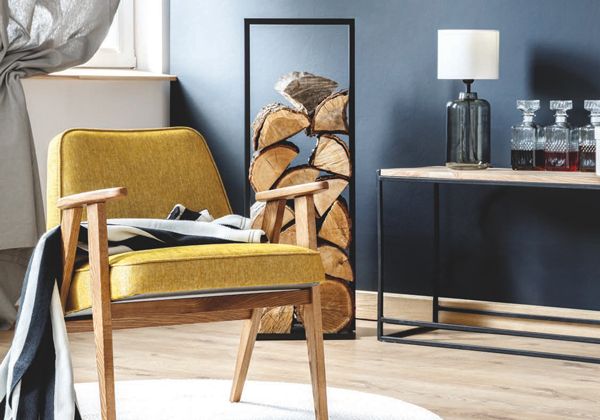
Accent chairs are the fun counterpoint to the functional sofa. They can impart a dash of whimsy to a room, providing a welcome spot for guests or a favorite area to curl up with a good book. If you are contemplating new seating for your home, you have more options than ever before, including chairs that swivel or recline, or accent seats that aren’t even chairs, like a chaise, bench or stool.
If you feel overwhelmed by the selections, ask yourself the following questions, and the answers will help point you to the best seating options for your space.
What do I want to do in this room?
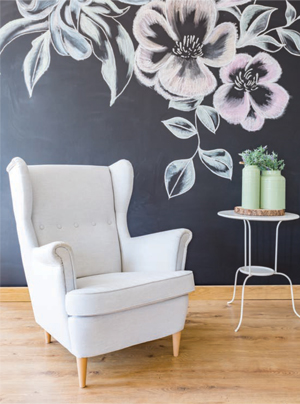 If you want a reading nook, you’ll need a sink-in chair that invites staying awhile. A wingback, with its high back and curved sides, is a timeless choice. Originating in the 17th century, it was created to protect the occupant from drafts, so it makes a cozy reading spot. A club chair would also suit, since its original French name translates to “the comfortable chair.” It has simple curved lines, a low back and is traditionally clad in durable leather, though it can be found in any fabric. If you want something modern and midcentury, the Eames lounge chair is now a classic. Husband and wife team Charles and Ray Eames set out to create a chair that captured the look of a worn baseball mitt, and the curvy wood shell and leather upholstery on a swivel base was an instant hit. While you’ll find an original in the Museum of Modern Art, you can score a knock-off for a relative bargain. But whatever chair you choose for reading, you might consider either a chair with an ottoman or one that reclines for those long reading sessions.
If you want a reading nook, you’ll need a sink-in chair that invites staying awhile. A wingback, with its high back and curved sides, is a timeless choice. Originating in the 17th century, it was created to protect the occupant from drafts, so it makes a cozy reading spot. A club chair would also suit, since its original French name translates to “the comfortable chair.” It has simple curved lines, a low back and is traditionally clad in durable leather, though it can be found in any fabric. If you want something modern and midcentury, the Eames lounge chair is now a classic. Husband and wife team Charles and Ray Eames set out to create a chair that captured the look of a worn baseball mitt, and the curvy wood shell and leather upholstery on a swivel base was an instant hit. While you’ll find an original in the Museum of Modern Art, you can score a knock-off for a relative bargain. But whatever chair you choose for reading, you might consider either a chair with an ottoman or one that reclines for those long reading sessions.
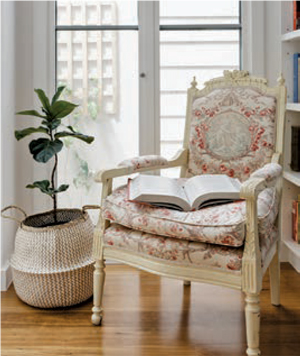 If you have an empty corner in your home that you want to fill, a beautiful chair that is as much art as a seat can fit the bill, especially if you don’t plan to sit there for long stretches of time. A Bergere chair, a French upholstered armchair with an exposed wooden frame, lends a formal air to a dining room or living room corner. A slipper chair, which lacks arms and sits low to the ground, can also play well in formal spaces. If it will be rarely used, a fine fabric you can’t use in the family room can have its place without worry about wear. An unusual chair, with an exaggerated profile, splashy fabric or both, can make a style statement in a guest room corner or in a vignette by the front door or in a hallway, giving you a jolt of joy when you bypass it, whether or not it functions as a chair.
If you have an empty corner in your home that you want to fill, a beautiful chair that is as much art as a seat can fit the bill, especially if you don’t plan to sit there for long stretches of time. A Bergere chair, a French upholstered armchair with an exposed wooden frame, lends a formal air to a dining room or living room corner. A slipper chair, which lacks arms and sits low to the ground, can also play well in formal spaces. If it will be rarely used, a fine fabric you can’t use in the family room can have its place without worry about wear. An unusual chair, with an exaggerated profile, splashy fabric or both, can make a style statement in a guest room corner or in a vignette by the front door or in a hallway, giving you a jolt of joy when you bypass it, whether or not it functions as a chair.
What size chair do I need?
Scale can be tricky, and nearly impossible to get right if you pick out furniture in a big showroom without measuring first. A chair that appears small in a store with soaring ceilings can quickly overwhelm your space once it’s delivered. If shopping in person, take the tape measure with you, and if browsing online, pay close attention to dimensions. Consider visual weight as well, because a chair with chunky arms, a high back or dark fabrics might appear larger than it is.
 If you want a bargain, browse antique stores and estate sales. While a pair of chairs can be hard to find there, unique single pieces are easier to score. A coat of lacquer in a show-stopping accent color and some new fabric can make an old piece sing. Some vintage favorites feel fresh now, such as rattan and cane chairs.
If you want a bargain, browse antique stores and estate sales. While a pair of chairs can be hard to find there, unique single pieces are easier to score. A coat of lacquer in a show-stopping accent color and some new fabric can make an old piece sing. Some vintage favorites feel fresh now, such as rattan and cane chairs.
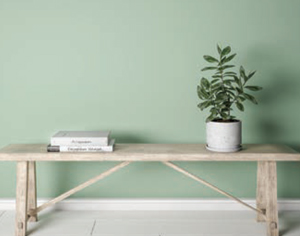 For an airy look, consider an armless chair, a transparent acrylic chair (sometimes called a ghost chair), a bench or pair of stools. If the room is tight on space but has a fireplace, a bench or pair of stools in front of it utilizes the space when the fireplace is not in use. And most importantly, when it comes to determining size, be sure you aren’t blocking the flow of the room. If you have doubts, consider putting painter’s tape on the floor in the exact size and shape of the chair you’re considering, and walk around it for several days. If it feels awkward, reevaluate.
For an airy look, consider an armless chair, a transparent acrylic chair (sometimes called a ghost chair), a bench or pair of stools. If the room is tight on space but has a fireplace, a bench or pair of stools in front of it utilizes the space when the fireplace is not in use. And most importantly, when it comes to determining size, be sure you aren’t blocking the flow of the room. If you have doubts, consider putting painter’s tape on the floor in the exact size and shape of the chair you’re considering, and walk around it for several days. If it feels awkward, reevaluate.
 What kind of fabric do I want?
What kind of fabric do I want?
If other seating in the room is neutral, you can inject color by choosing a bright accent fabric on chairs. If you are working with an existing sofa and neutrals speak to you, go with a coordinating neutral fabric, but don’t try to match your sofa. A match that isn’t perfect looks awkward, but coordinating neutral tones are soothing. If you have pets or children, performance fabrics like Sunbrella have come a long way and ease clean-ups. Chairs that are slipcovered also clean up easily and many can be thrown in the wash, allowing you to freshen them up periodically.
If durability is a concern, examine a fabric’s rub count. Rub tests are done on fabrics to determine how much normal wear it can handle before it shows. For maximum durability, choose fabrics above 25,000 for frequently used chairs. For accent chairs in less-used spaces, like a guest room, it’s fine to select fabrics that are lower on the scale.
What’s the style in this room?
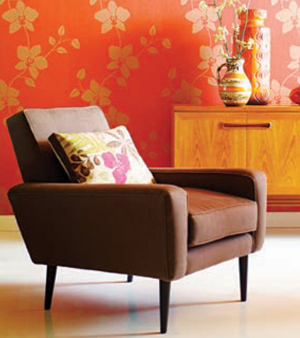 When considering fabric and chair design, look at the other furniture in the room. Matchy-match is out, so it’s nice to vary furniture legs in the space. For example, if a sofa is leggy, consider a slipcovered chair with a softer drape. If the coffee table is visually heavy, a lighter profile chair with longer legs, or an armless one, can be the counterpoint. Variation creates interest in a room.
When considering fabric and chair design, look at the other furniture in the room. Matchy-match is out, so it’s nice to vary furniture legs in the space. For example, if a sofa is leggy, consider a slipcovered chair with a softer drape. If the coffee table is visually heavy, a lighter profile chair with longer legs, or an armless one, can be the counterpoint. Variation creates interest in a room.
If your style is eclectic, your options are limitless. Midcentury, modern, transitional and vintage-style chairs could all look at home in your home. For transitional spaces, modern touches can look fresh; chairs with streamlined style can play well with more traditional pieces.
With a little forethought, a tape measure and some painter’s tape, you can ensure that your new chair selection will look perfect in your home, and will be enjoyed for years to come. ✦
Accent chairs. swivel, accent seating, bench, Bergere chair, chair, chaise, club chair, Eames lounge chair, recline, slipper chair, stool, wingback









